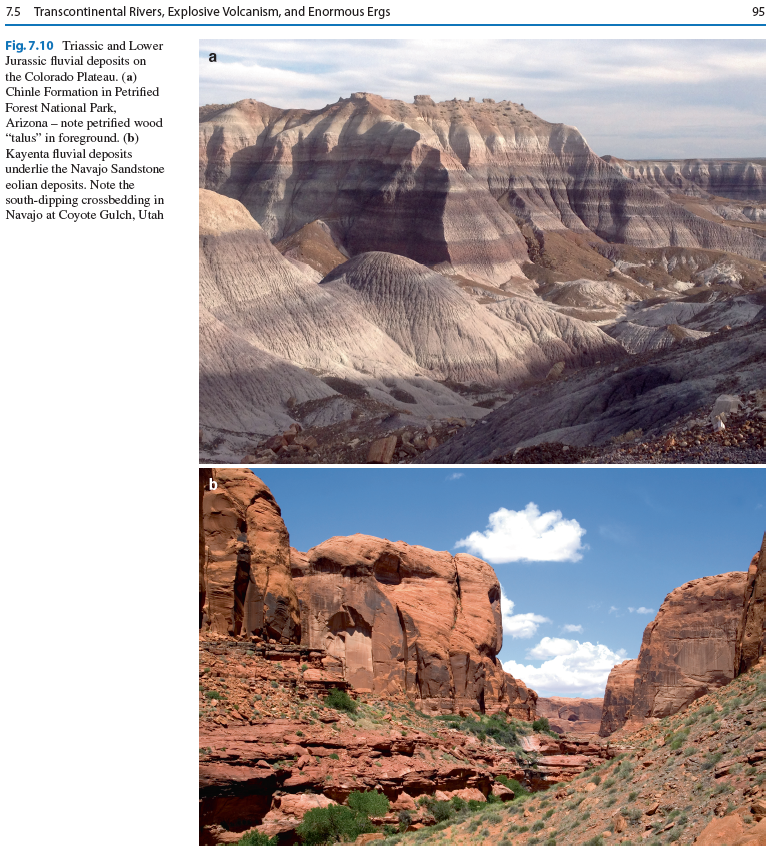In this new book, Dr. Ron Blakey's stunning paleogeographic maps take center stage again, but this time the maps cover much larger areas in western North America, running in many cases from southeast Alaska to Sonora Mexico, and from the Pacific coast to Colorado. A few sample maps and diagrams can be seen below. I wrote the text that leads readers on a journey through time in the western North American Cordillera. Cordillera is a Spanish word for rather large and rugged mountainous areas. Our original intent was to title the book, Ancient Landscapes of the Western Cordillera but both of our non-geologist wives objected to that wording as being cryptic. Being good husbands, we listened to them. Geologists borrow the word from the Spanish and commonly use the term to refer to the active margins of both North and South America.
This map shows the Pacific edge of North America at about 270 Ma (million years ago) with the state lines serving to place the ancient landscapes upon the modern ones. Various shades of blue represent sea water at relative depths with darker blue depicting deep water and lighter blue to whitish depicting very shallow water. Land areas are obvious with mountains shown amidst light yellow coloring that depicts the location of ancient sand dunes. In the Four Corners area, the Kaibab Sea is portrayed which deposited the Kaibab Limestone now exposed on the rim of Grand Canyon. The micro-continents shown in California and Nevada are drifting toward the east into the edge of the continent during the Sonoma orogeny (mountain building event). There are dozens of portrayals of western North America like this at various time slices for the last 3,500 million years.
This set of five maps is Figure 7.5 and shows five separate time slices of the Pacific edge of North America during a 15 million year period from 165 Ma to 150 Ma. The large wedge-shaped micro-continent seen in the bottom three maps depicts Wrangellia (labeled WR) and is perhaps the most important exotic terrane that accreted to North America at this time.
One of numerous diagrams that accompany the maps. This cartoon shows four time slices at 160, 130, 80, and 50 Ma as various terranes accreted onto the edge of the continent.
I include a sample of my writing style below with the Epilogue:







